Understanding the Importance of an Effective Hindustani Vocal Practice Structure
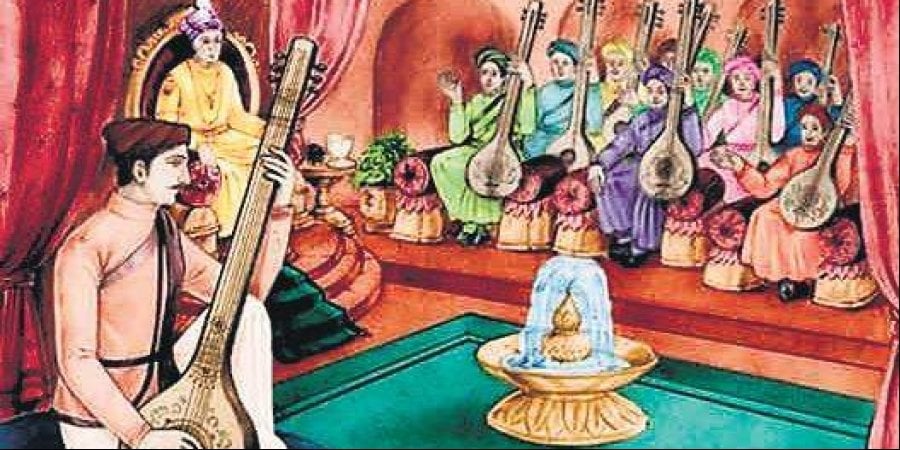
The Foundation of Effective Hindustani Vocal Practice
An effective Hindustani vocal practice structure is essential for anyone serious about mastering the art of classical singing. Just like any other skill, vocal mastery doesn’t come overnight. It requires a methodical and consistent approach to achieve steady progress. With the right practice structure, you can develop a deep understanding of the intricate elements that make up Hindustani vocal music, from ragas to taals and beyond.
Why a Structured Approach is Vital for Effective Hindustani Vocal Practice
To begin with, an effective Hindustani vocal practice structure is crucial for both beginners and advanced practitioners. Without a proper structure, your practice sessions can become scattered, leaving you with little room for meaningful improvement. A well-planned practice schedule helps you build foundational skills while also allowing you to challenge yourself with more complex techniques. Therefore, setting up a structured routine is the first step towards effective Hindustani vocal practice.
Achieving Emotional Depth and Creativity in Your Vocal Practice
An effective Hindustani vocal practice not only focuses on technical aspects like vocal strength and range but also emphasizes the importance of emotional expression and creativity in music. Hindustani classical music is unique because it requires the singer to not just master the technical side but also deeply connect with the ragas and taals they are singing. This emotional connection elevates the music and brings it to life, making structured practice even more valuable.
Tracking Progress and Continuous Improvement with Effective Hindustani Vocal Practice
Moreover, with a carefully crafted vocal practice structure, you can track your progress over time. Monitoring your development through specific exercises and goals ensures you’re not just practicing for the sake of it but improving consistently. With discipline, patience, and an effective Hindustani vocal practice routine, you can truly enhance your vocal abilities and move closer to mastery.
By maintaining an effective Hindustani vocal practice routine, you will find yourself improving not only in technique but also in your overall musicality. This combination of discipline, emotional depth, and structured practice is the key to becoming a proficient Hindustani vocalist.
Establishing a Clear Practice Goal | Direction for Your Progress
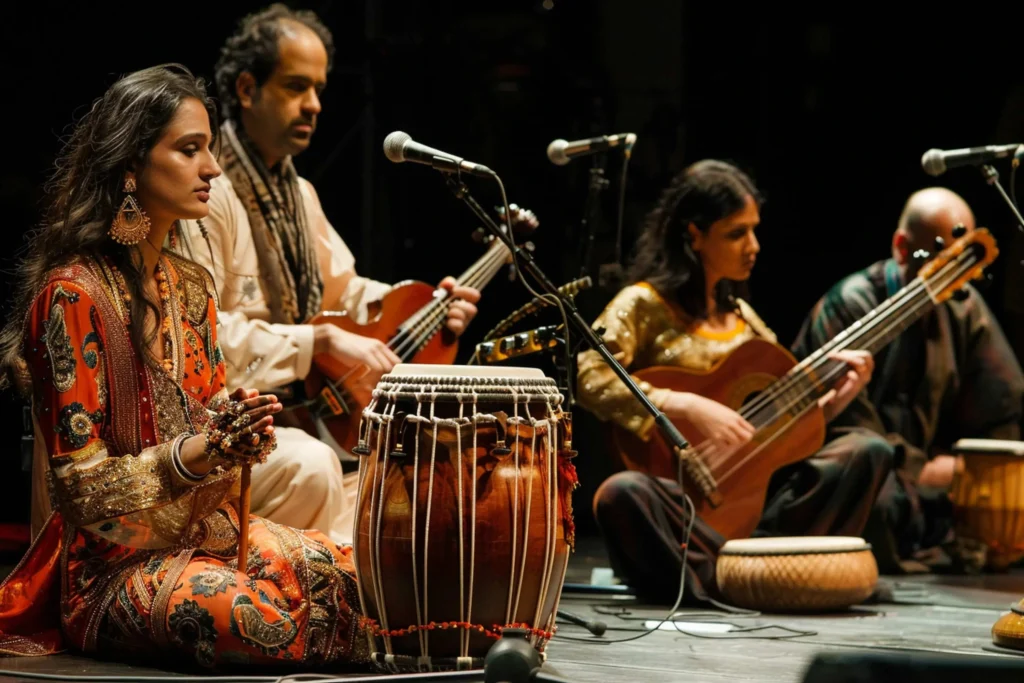
Establishing clear and specific practice goals is essential for progress in Hindustani vocal music. Without a well-defined objective, your practice sessions may lack direction, leading to slower improvement. Setting clear goals not only helps you stay focused but also allows you to measure your progress, providing a sense of accomplishment along the way.
Short-term Goals: Building Immediate Focus
Short-term goals are those objectives you can achieve within a few days or weeks. These goals help you maintain a steady pace and keep you motivated. For example, you might set a short-term goal to improve your pitch accuracy in a specific raga or practice a particular taan or ornamentation technique. Achieving these goals regularly provides small wins that propel you forward in your journey.
Medium-term Goals: Strengthening Your Foundation
Medium-term goals help you integrate various skills into your practice. These are goals that may take a month or more to achieve, such as mastering a specific raga in its entirety, including its alap, jor, and taan. By focusing on medium-term goals, you build the foundation needed to tackle more complex musical challenges. Working towards medium-term goals also gives you something concrete to measure your progress against.
Long-term Goals: Aiming for Mastery
Long-term goals are those that may take years to achieve, such as preparing for stage performances or fully understanding and mastering multiple ragas. These goals require patience and perseverance, but they give you a sense of purpose in your practice. For instance, performing a full-length concert or creating an original composition within a raga are examples of long-term objectives that push your limits and help refine your skills over time.
Reviewing and Adjusting Your Goals
It’s important to regularly review your practice goals and adjust them as you progress. As you master certain techniques, your goals should evolve to reflect new challenges. This not only keeps your practice engaging but also ensures continuous improvement, making it possible to aim higher as you grow as a vocalist.
Creating a Structured Routine | Maximizing Your Practice Time
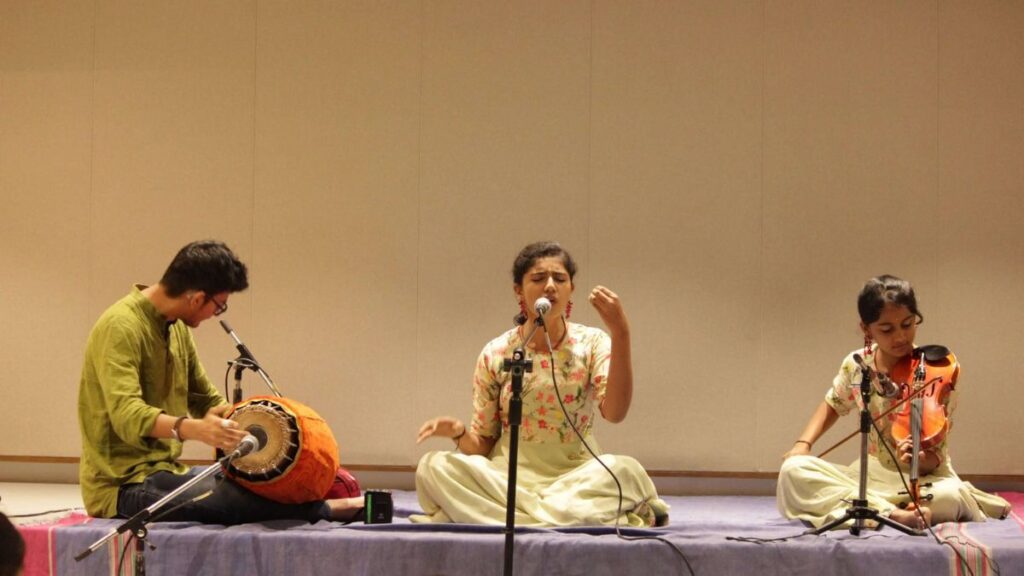
To make significant progress as a Hindustani vocalist, you must follow a well-structured practice routine. A structured routine not only optimizes your practice time but also ensures that every aspect of your vocal development is addressed. By balancing technical exercises, raga practice, improvisation, and performance preparation, you can make steady improvements and avoid stagnation.
Warm-up and Breathing Exercises: The Key to a Healthy Voice
Before diving into any vocal practice, always begin with a proper warm-up. A good warm-up prepares your vocal cords for the intensity of classical singing and helps prevent strain. Breathing exercises are equally important, as they strengthen your diaphragm and increase lung capacity, giving you better control over your voice. Start with deep breathing and diaphragmatic exercises, and gradually progress to vocal exercises such as humming or sliding through scales.
Additionally, practicing pranayama (yogic breathing exercises) can improve your lung capacity and control, making it easier to sustain long notes and complex phrases.
Raga Practice: The Heart of Hindustani Classical Music
A significant portion of your practice should be dedicated to raga practice. Start with learning the basics of a raga, focusing on its alap (slow, free-flowing introduction), jor (medium-paced section), and jhala (fast-paced conclusion). It is important to understand the mood and emotional context of the raga, which will allow you to express its essence through your voice.
Spend time on the pakad (signature phrase) of each raga, as it defines its unique character. Practice the raga in different tempos and experiment with improvisational elements such as taans, murkis, and gamaks to develop your vocal flexibility.
Vocal Technique: Building Strength and Control
Incorporating vocal technique exercises is essential for building strength and control. Work on improving sur (pitch accuracy), taal (rhythm), and laya (tempo). Start by practicing sargams (solfege syllables), which are simple but effective for enhancing pitch accuracy. Following this, focus on alankars (ornamentations) to add vibrancy to your voice.
Regular practice of taans (rapid melodic runs) helps improve your agility and stamina. By consistently working on your vocal technique, you ensure your voice remains strong, flexible, and expressive.
Performance Preparation: Simulating Live Conditions
To prepare for a performance, it’s important to simulate stage conditions during practice. Singing in front of a mirror or recording your practice can help you assess your stage presence. Pay attention to how you express the emotional content of the raga. Perform for family members or friends, even if informally, to build confidence and get used to performing in front of others.
Focus on Breath Control | The Foundation of Hindustani Vocal Performance
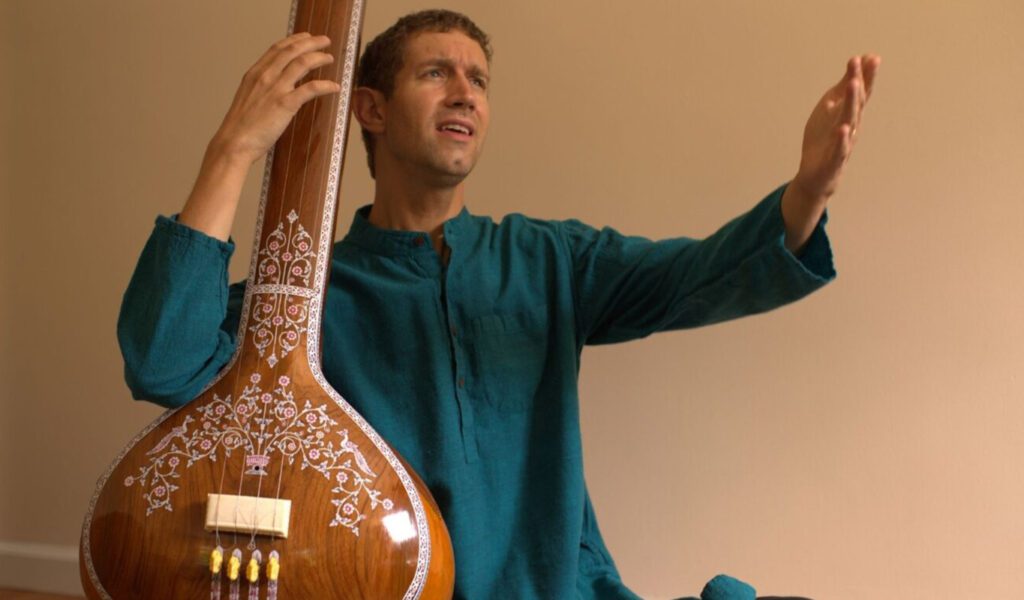
Breath control is arguably the most important aspect of vocal performance in Hindustani classical music. It is the foundation that supports long, sustained notes, intricate taans, and expressive improvisations. Without proper breath control, it becomes difficult to achieve the tonal quality and emotional depth required in Hindustani music.
Understanding Diaphragmatic Breathing
Diaphragmatic breathing is the most essential technique for classical singers. This type of breathing involves expanding your diaphragm rather than your chest, ensuring that your lungs are fully filled with air. By practicing diaphragmatic breathing, you can increase your lung capacity, which is vital for sustaining long phrases and singing with greater volume and clarity.
To practice this, place one hand on your stomach and take a deep breath. Ensure that your stomach expands outward as you inhale and contracts inward as you exhale. This technique strengthens the diaphragm and enhances your breath support.
Breathing Exercises for Control and Stamina
In addition to diaphragmatic breathing, there are specific exercises designed to improve breath control. Start by practicing sustained notes, gradually increasing the duration of each note you sing. This exercise improves the capacity of your lungs and strengthens your control over your exhalation.
A great exercise for stamina is to sing a long note while counting from one to ten, holding the note for each number. This exercise helps you regulate your breath and maintain a steady, controlled voice, especially during difficult passages.
Sustaining Long Phrases and Notes
The ability to sustain long phrases without breaking the breath is crucial in Hindustani classical music. Work on sustaining notes across multiple octaves, gradually increasing the length of time you can hold each note. As you build this skill, you will be able to sing longer, more complex phrases with greater ease.
You can also practice by singing the alap of a raga, where the emphasis is on slow, sustained notes. Focus on maintaining a steady, consistent tone as you explore the raga. Over time, you’ll be able to sing more challenging pieces with improved endurance and smoothness.
Voice Projection and Breath Support
Another key aspect of breath control is voice projection. While it’s important to sing with clarity and accuracy, it’s equally essential to project your voice so that it fills the performance space. Practice projecting your voice without straining by supporting it with controlled breath. This allows your voice to resonate more effectively and creates a rich, full sound.
Use your diaphragm for support, allowing your breath to flow freely without pushing or forcing the air. This technique will help you sing louder without damaging your vocal cords and will improve your overall vocal health.
Mastering Sur, Taal, and Laya | The Building Blocks of Effective Hindustani Vocal Practice
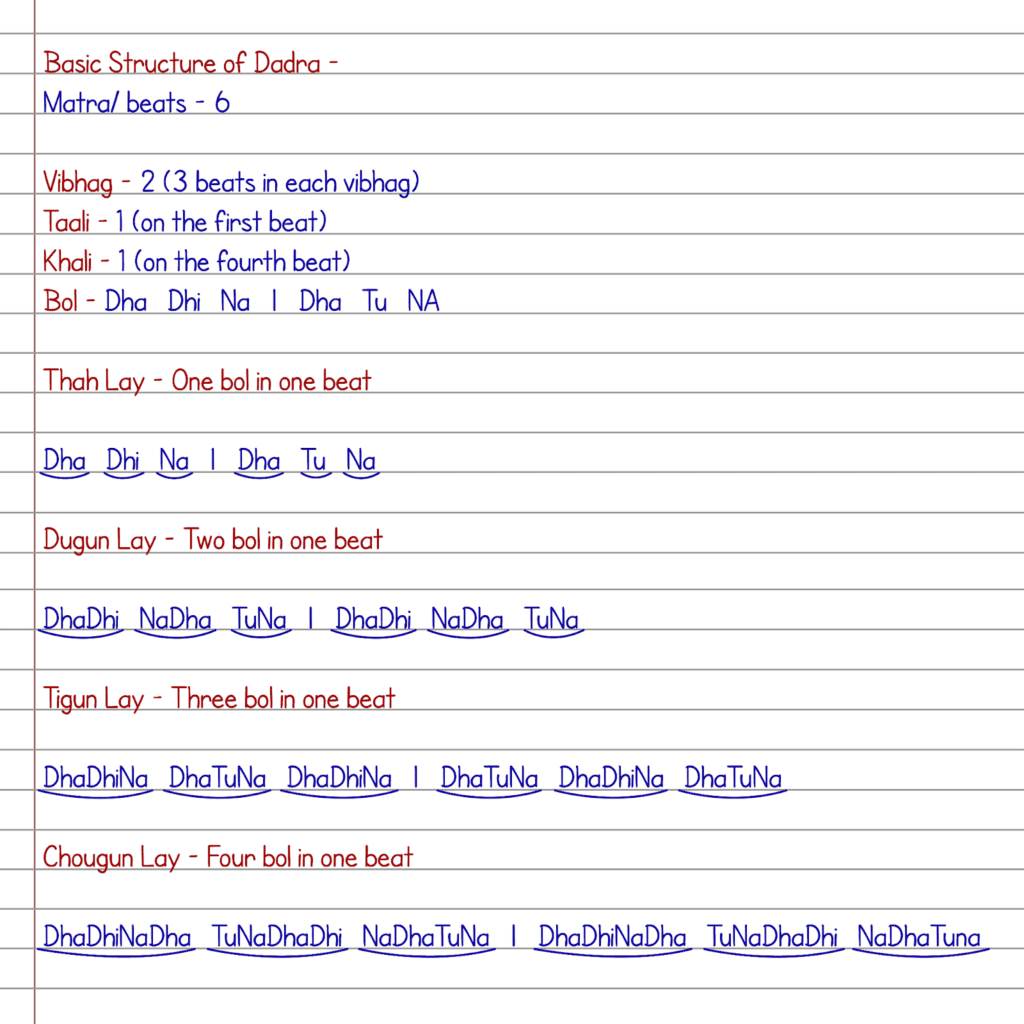
Raga practice is at the heart of Hindustani classical music. It’s not just about learning a melody but about deeply understanding the emotional essence and technical nuances of each raga. Through consistent and mindful practice, you can not only improve your vocal ability but also evoke powerful emotions through your singing.
Understanding the Structure of a Raga
Each raga has a distinct emotional quality and a specific structure. Therefore, it is essential to grasp the theoretical foundation of the raga before diving into its practice. Start by learning the basic arohan (ascending scale) and avroh (descending scale), which lay the groundwork for understanding the flow of the raga. As you progress, focus on memorizing key phrases or pakads that define the raga’s character. These signature phrases serve as the foundation of your improvisation and ornamentation within the raga.
Alap, Jor, and Jhala: Building Your Raga Performance
A comprehensive raga performance includes several sections: Alap, Jor, and Jhala. Each of these segments requires distinct approaches, which collectively form the emotional and technical depth of the raga.
-
Alap: This is a slow, improvisational exploration of the raga, where you emphasize mood over speed. It’s important to sing the alap with deep understanding and reflection, as this is where you introduce the raga’s character. Focus on smooth transitions and avoid rushing, as the alap is meant to draw listeners into the raga’s mood.
-
Jor: Moving from the alap to the jor, you introduce a rhythmic element without fixed beats. Here, the tempo gradually increases, and your improvisation begins to incorporate rhythmic patterns. Focus on controlled vocal speed and clarity while introducing creative phrases that showcase the raga’s nuances.
-
Jhala: The final section of a raga performance, jhala, is fast-paced and brings the raga to a vigorous conclusion. This requires agility and breath control. While working on jhala, practice rapid taans (melodic runs) and work towards seamless transitions between fast and slow tempos.
Improvisation and Ornamentation in Raga
Improvisation is a key component of raga practice. As you become more comfortable with the raga, experiment with ornaments like murkis (quick melodic flourishes) and gamaks (grace notes). These ornaments add depth and individuality to your rendition of a raga. However, always ensure that improvisation is guided by the raga’s mood and structure, maintaining its integrity while allowing for personal expression.
Furthermore, remember that practicing different versions of the same raga, across various time slots and emotional expressions, will help you expand your understanding and mastery.
Strengthening Vocal Technique | Precision and Control
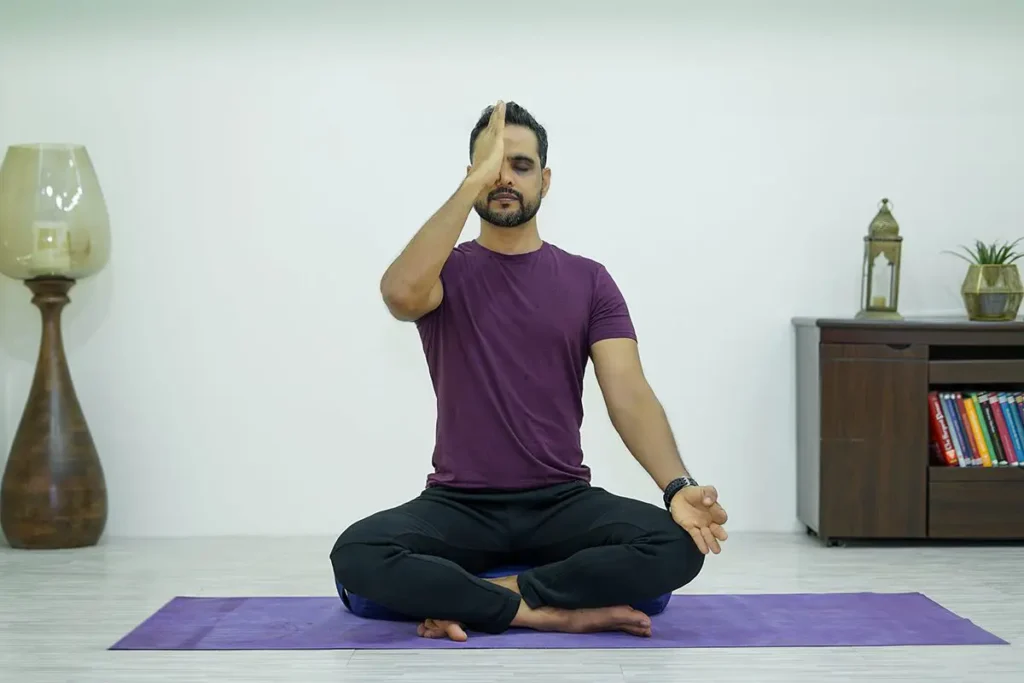
Building strength, precision, and control over your voice is essential in Hindustani classical music. This involves both technical exercises and understanding the physical aspects of singing. Regular practice of vocal exercises, including sargams, alankars, and taans, will help you improve pitch accuracy, vocal agility, and stamina.
Pitch Accuracy: The Core of Classical Singing
Pitch accuracy, or sur, is paramount in Hindustani classical music. Without correct pitch, the entire performance can lose its emotional depth and authenticity. Start by practicing sargams, or solfege (do-re-mi) exercises, to improve your pitch accuracy. These exercises are crucial for developing a good ear for pitch and aligning your voice with the natural sound of the raga.
One effective way to practice pitch accuracy is to use a tanpura or digital tuning device. It provides a reference pitch that helps you stay in tune while singing, especially when you’re working on more complex ragas. Gradually, try to sing without the tanpura to rely entirely on your ear.
Vocal Agility and Ornamentation
As a Hindustani vocalist, it’s essential to build the agility necessary for singing fast taans and ornaments. Taans, which are rapid melodic runs, help showcase your control over pitch and rhythm. Practice ascending and descending taans in different ragas to improve flexibility in your voice. Start slow, and then gradually increase the speed while ensuring that each note is clear and distinct.
For improving ornamentation, focus on mastering murkis and gamaks, which are essential to the classical style. Practice them slowly and increase speed only when you can maintain clarity. Both techniques require significant control over your vocal cords, and with time, they will enhance your tonal quality and ornamentation skills.
Breath Control: The Key to Sustaining Long Phrases
Breath control is another vital component of vocal technique. It allows you to sustain long phrases, control your volume, and prevent vocal strain. Practicing deep breathing exercises, such as pranayama or diaphragmatic breathing, will significantly improve your breath capacity. The more control you have over your breath, the longer and more powerful your phrases will be. Additionally, practicing sustained notes across octaves will help you improve your stamina.
While working on breath control, always ensure that your breath supports your tone, rather than being a source of tension. This control will allow you to perform complex, sustained passages with ease and power.
Consistent Practice and Mental Focus | The Path to Mastery
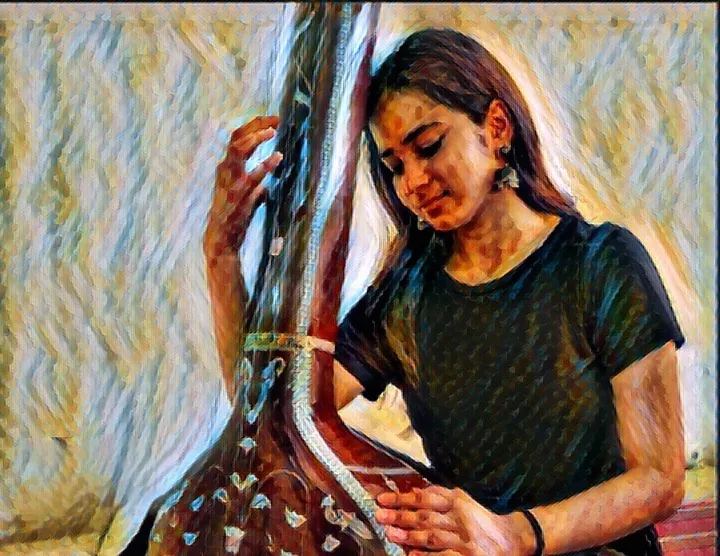
Achieving mastery in Hindustani classical music requires dedication, persistence, and mental focus. Consistency in practice, along with a clear understanding of the mental and physical challenges involved, is key to your development as a vocalist.
Setting a Practice Schedule: Discipline is Key
One of the most effective ways to stay consistent is by setting a structured practice schedule. Allocate specific times during the day to focus on different aspects of your practice, such as raga exploration, vocal exercises, and improvisation. Be disciplined and adhere to the schedule, but also allow flexibility for more intense practice sessions when required. Regular, uninterrupted practice will yield steady progress and improve your vocal skills over time.
Mental Focus and Emotional Connection
Hindustani classical music is not just about technique; it’s about expressing deep emotions through sound. In order to truly connect with the music, you must cultivate mental focus during your practice. Before beginning any session, take a few moments to center yourself. Close your eyes, breathe deeply, and set your intention for that practice session. Think of the emotional expression you want to convey through the raga.
Connecting emotionally with the music helps elevate your performance and makes your singing more expressive and impactful. Whether you’re practicing a slow alap or a fast taan, always focus on the emotional core of the music. This will help you move beyond technique and create a deeper, more authentic performance.
Avoiding Burnout: Balancing Intensity and Rest
While consistent practice is important, it’s equally vital to avoid burnout. Regular rest is essential to ensure that your voice remains in optimal condition. Over-practicing without sufficient breaks can lead to strain and fatigue, which can be counterproductive. Make sure to listen to your body and voice, and incorporate rest days into your schedule. Moreover, ensure you’re not just physically resting, but also mentally recharging by engaging in activities outside of music.
Take the time to observe your progress, reflect on what’s working, and where improvements can be made. Regular rest, coupled with focused practice, will help you maintain your energy levels and ensure long-term success in your vocal journey.
Strengthening Your Vocal Range | Expanding Your Limits
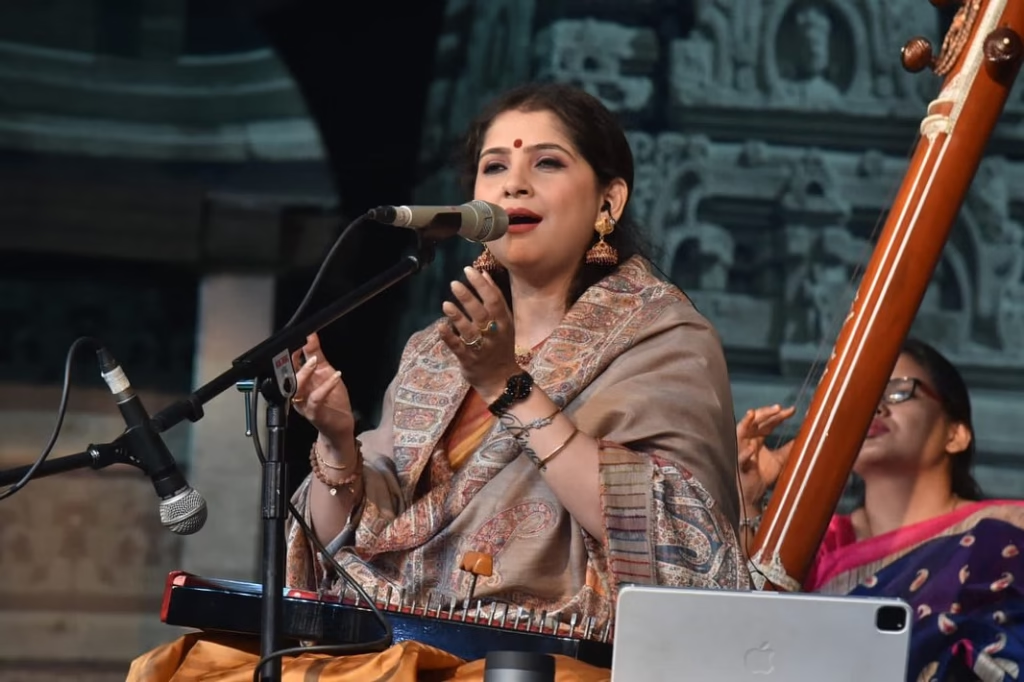
A wide vocal range is crucial for Hindustani vocalists, as it allows for greater flexibility and expression within different ragas and compositions. Expanding your vocal range requires regular practice, patience, and awareness of your vocal capabilities.
Understanding Your Natural Vocal Range
The first step in strengthening your vocal range is understanding your natural vocal limits. Every voice has a specific range where it feels most comfortable and where it can sing with the most ease. Identify the lower and higher notes you can sing comfortably, without straining. It’s important not to push your voice too quickly, as doing so can lead to vocal damage. Instead, start by learning how to properly transition between your lowest and highest notes.
Gradual Range Expansion
Once you’ve established your natural range, gradually start working on expanding it. Begin with exercises that focus on smooth transitions between registers—particularly from chest voice (lower register) to head voice (higher register). Sirens and glissandos (sliding from low to high notes) are great exercises to improve flexibility and strengthen these transitions. As you practice, ensure you’re maintaining relaxed vocal cords and using proper breath support. It’s crucial to never force a note, as this could strain your voice.
Additionally, try practicing your ragas and alankars (decorative elements) across different octaves. For instance, singing sa, re, ga, ma, etc., in both lower and higher octaves will help in developing control over both registers. Through consistent practice, your vocal range will expand, giving you the ability to sing complex ragas and improvisations with ease.
Maintaining Vocal Health
While working on vocal range, maintaining vocal health is essential. Overexertion can lead to vocal fatigue or injury. It’s important to always warm up your voice before each practice session and cool down after. Additionally, maintaining proper hydration and avoiding excessive strain (like yelling or over-singing) is key to keeping your voice in optimal condition. Resting your voice when it feels tired, as well as integrating techniques for relaxation, will allow you to continue working on expanding your range safely.
Developing Rhythm and Tala | The Foundation of Hindustani Music
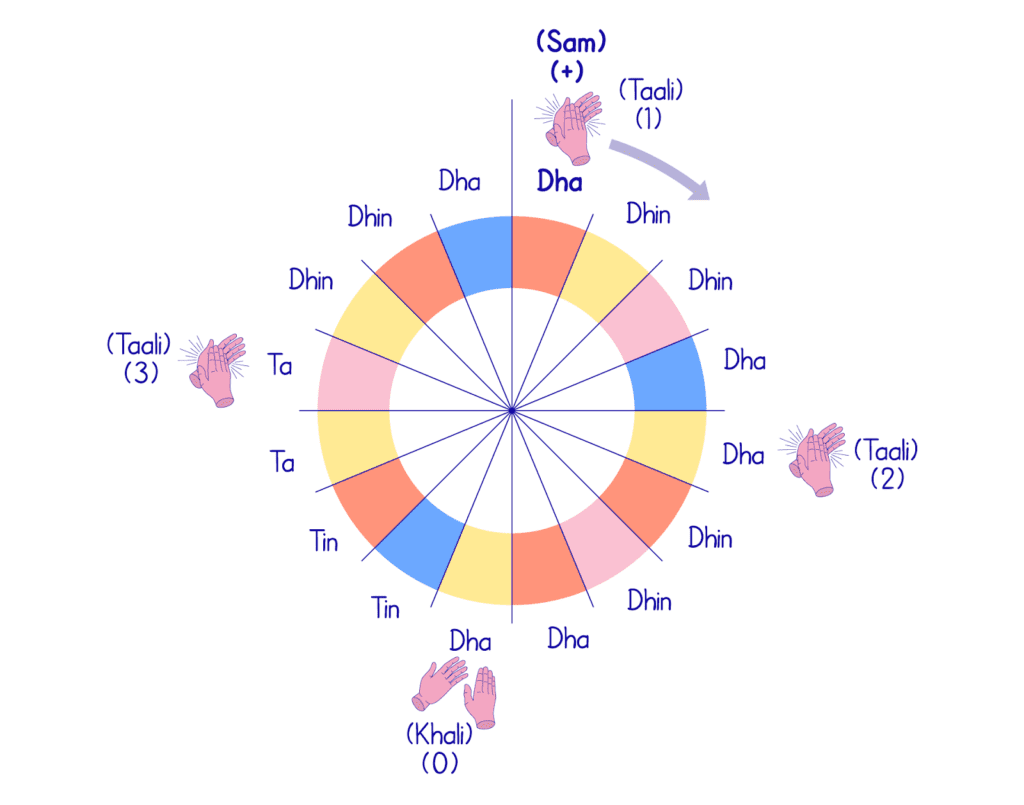
Rhythm and tala are fundamental elements of Hindustani classical music. Tala refers to the cycle of beats, and rhythm is what gives the music its structure and timing. Mastery of rhythm and tala is essential for a Hindustani vocalist, as it forms the backbone of a raga performance.
Understanding Tala: The Pulse of Music
The first step to mastering rhythm is understanding tala and its various cycles. There are numerous talas in Hindustani music, each with a specific number of beats. Common examples include Teentaal (16 beats), Ektal (12 beats), and Jhaptal (10 beats). Each tala cycle is divided into smaller sections called vibhags (parts), which add to the complexity of the rhythm.
Start by learning the most common talas and practicing them with a tabla or metronome for reference. Initially, focus on keeping time with the tala while singing simple sargams or swaras (notes). This will help you internalize the rhythm and begin to feel the tala more intuitively. Gradually increase the complexity of the compositions you sing in each tala, and begin to experiment with improvisation within those rhythmic frameworks.
Rhythmic Exercises for Building Precision
Improving rhythmic precision involves practicing with clear and deliberate intention. Begin with basic rhythmic exercises such as ta-ta-ki-ta, dhin-dhin-na, or ta-ka-di-mi in different talas. These exercises will help your mind and body internalize the rhythmic patterns, making it easier to maintain a steady pace while singing. By practicing regularly with a tabla or digital drum machine, you can improve your accuracy in both timing and pitch alignment within the rhythmic cycle.
Another effective way to develop rhythm is by incorporating rhythmic improvisation. As you become more comfortable with tala cycles, start improvising within them. This will develop your ability to play with rhythmic variations, adding more depth to your performance. By combining your vocal improvisation with rhythmic creativity, you will enhance both your technical skill and expressive range.
Timing and Syncing with Accompaniment
Hindustani music often involves accompaniment with tabla or harmonium. To create a cohesive performance, it’s crucial to synchronize your voice with the rhythmic accompaniment. Work with a tabla player or use a pre-recorded tabla track to practice staying in sync with the beat. Focus on aligning your swaras with the beat and maintaining a steady pulse throughout the performance. As you advance, try experimenting with variations in timing, such as slowing down or speeding up in specific parts of the raga, all while remaining within the tala framework.
The Role of Emotion in Hindustani Vocals | Connecting with the Listener
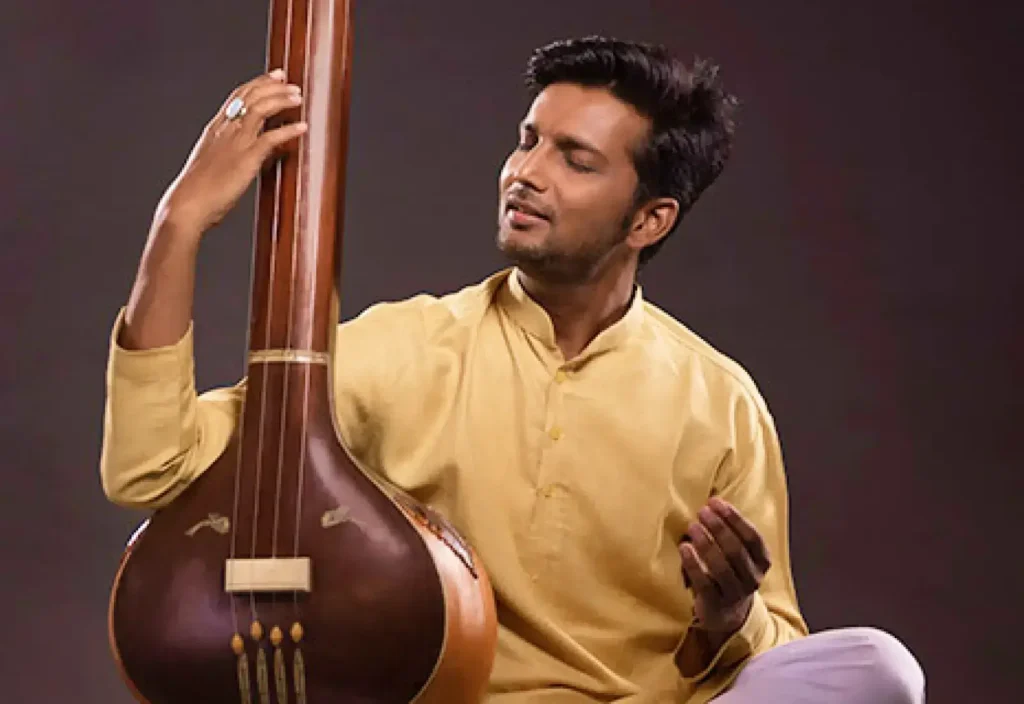
Hindustani classical music is deeply rooted in expressing emotional nuances through melody. Unlike other musical traditions, the emotional connection between the performer and the audience is paramount in Hindustani music. Therefore, learning how to convey emotions effectively in your singing is essential for creating impactful performances.
Embodying the Raga’s Mood
Each raga is associated with a particular mood, time of day, and season. For instance, Raga Yaman is often associated with a mood of devotion and tranquility, while Raga Bhairav may evoke feelings of awe and solemnity. To truly capture the essence of a raga, it’s essential to internalize its emotional quality. Before you begin practicing a raga, close your eyes and reflect on the mood it conveys. Think about the time of day and season it represents.
When singing the raga, try to embody its emotional content. Pay attention to how the notes, ornamentations, and dynamics of the raga interact to create an emotional journey. Expressing the mood of the raga requires more than just technical skill—it requires you to feel and communicate that emotion to the audience. Practice singing while maintaining this emotional connection, and always keep in mind the emotional journey of the raga.
Vocal Color and Expressive Techniques
Your voice is your most powerful instrument for expressing emotion. To bring depth to your vocal performance, experiment with various techniques such as meend (gliding between notes), gamak (grace notes), and murki (quick ornamentations). These techniques can add subtle nuances to your singing, helping to evoke different emotions within a performance. For instance, a meend between two notes can emphasize longing or desire, while a gamak can convey joy or exuberance.
Additionally, the use of dynamics (volume) plays a significant role in emotional expression. Singing softly or with greater intensity at different moments within the raga can draw the listener’s attention to particular phrases or ideas. Try varying your dynamics while practicing different ragas to see how this affects the emotional depth of your performance.
Mindful Practice: Connecting Emotionally with Your Voice
While technical skills are essential, it’s your emotional connection to the music that will truly set your performance apart. Practicing mindfulness can enhance this connection. During your practice, focus not just on the technical elements but also on how the music makes you feel. Allow yourself to connect deeply with the music before you begin singing, and let that emotional connection guide your performance.
This deep emotional engagement with the music will lead to more compelling and moving performances, ensuring that you can not only sing well but also touch the hearts of your listeners.
Importance of Breath Control in Hindustani Vocal Practice
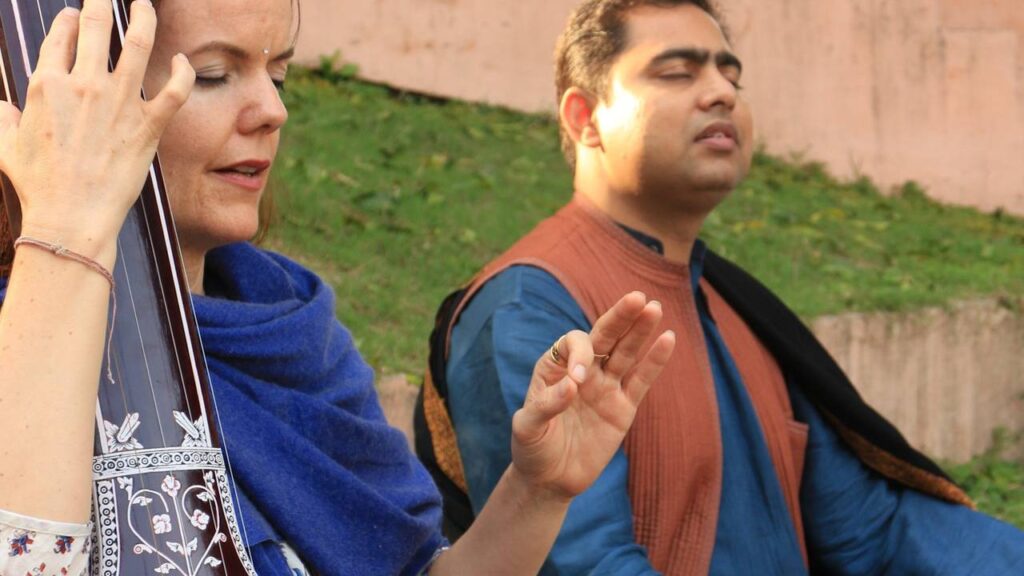
Breath control is one of the most vital aspects of Hindustani vocal practice. Proper breathing techniques not only help in sustaining long phrases but also in delivering clear and resonant notes. Without effective breath control, it can become challenging to execute the complex ornamentations and improvisations that characterize Hindustani classical singing.
Understanding Diaphragmatic Breathing
The foundation of breath control in Hindustani vocal practice lies in diaphragmatic breathing. Unlike shallow chest breathing, diaphragmatic breathing involves expanding the diaphragm rather than the chest, allowing for deeper, more controlled breaths. This technique provides greater vocal support and enables sustained, powerful singing without straining the vocal cords.
To master diaphragmatic breathing, start by practicing deep breaths where your belly expands outward as you inhale, and contracts inward as you exhale. This method allows you to take in more air, which is essential for long phrases in ragas. Additionally, diaphragmatic breathing helps reduce tension in the throat, allowing for clearer, more resonant tones.
Breathing Exercises for Effective Hindustani Vocal Practice
Incorporating breathing exercises into your daily practice can significantly enhance your breath control. One effective exercise is sustained note singing, where you take a deep breath and sustain a note for as long as possible, maintaining consistent volume and tone. Over time, this exercise helps increase lung capacity and improves breath management.
Another useful exercise is breath coordination with swaras. Start by practicing swaras in different octaves, taking a controlled breath before each note and releasing the air gradually. This exercise improves the synchronization between your breath and vocal output, allowing you to sing with greater ease and control, even in complex compositions.
By practicing these techniques regularly, you’ll find it easier to maintain vocal power, clarity, and consistency throughout your performances. Breath control, when incorporated into your Hindustani vocal practice, will elevate your overall vocal delivery.
Breath Support for Emotional Expression
Breath control also plays an important role in emotional expression. By learning to control the airflow, you can create more subtle variations in dynamics, such as swelling into a powerful crescendo or softening into a tender passage. This nuanced control enhances the emotional depth of your performance, allowing you to connect more deeply with your audience.
Mastering Swara Vistar and Alankar for Effective Hindustani Vocal Practice
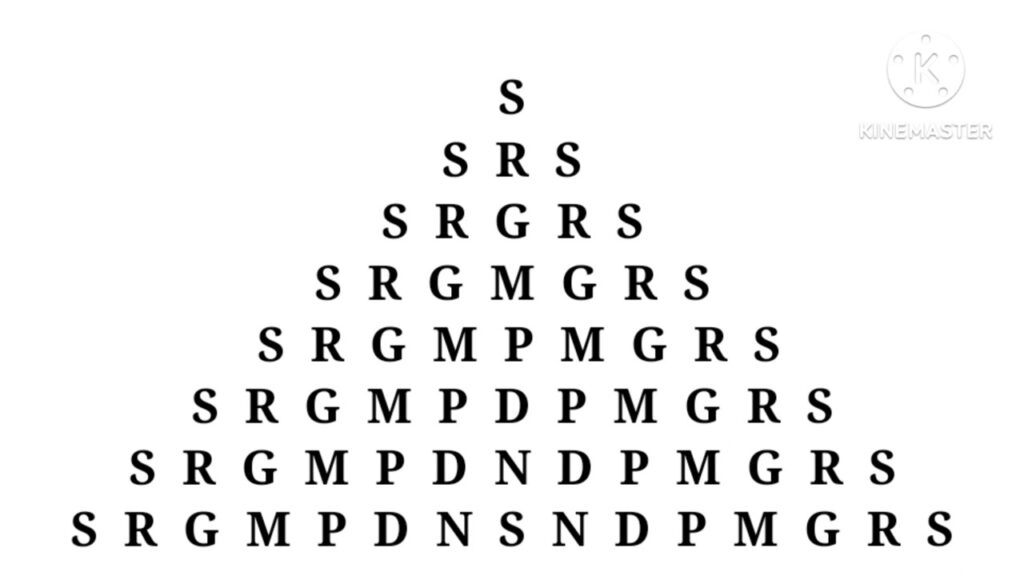
Swara vistar (expansion of notes) and alankar (ornamentations) are fundamental to Hindustani classical music. Mastering these elements requires not only technical skill but also an understanding of how to use ornamentation to elevate the emotional expression of a raga.
Swara Vistar: Expanding the Notes for Greater Expression
Swara vistar involves elaborating upon the basic swaras of a raga, often by adding grace notes and intricate phrasing. To practice swara vistar effectively, start by singing each note of a raga slowly and deliberately, allowing the sound to expand before moving to the next note. This not only enhances the tonal quality of each note but also adds emotional depth by giving each note room to resonate.
A good exercise for swara vistar is to practice meend (sliding between notes), which is a key technique in Hindustani music for extending and connecting notes. You can also practice singing gamaks (ornamented, oscillating notes) to add richness and texture to the swaras. By gradually incorporating these techniques, you will learn how to perform swara vistar with a seamless flow, improving your overall vocal expression.
Alankar: Ornamentation to Enhance the Melody
Alankars, or ornamentations, are stylistic flourishes that add intricacy and beauty to a raga. These can include murki, khatka, and gamak. Alankars are used to embellish the main notes and bring the raga to life. Start by learning basic alankars and practice them with simple sargams. As you become more comfortable, incorporate these alankars into your raga performance.
For example, murki adds a fast, intricate vibrato-like movement to a note, while khatka introduces a quick grace note before landing on the main note. Practicing these ornamentations will allow you to bring a higher level of expressiveness to your vocal delivery. Gamak, which involves oscillating between two notes, adds depth and variation to the melody, making your performance more engaging.
By mastering these techniques, you’ll be able to add nuance and emotion to your vocal performance, enhancing your Hindustani vocal practice.
The Art of Performance | Bringing Your Effective Hindustani Vocal Practice to the Stage
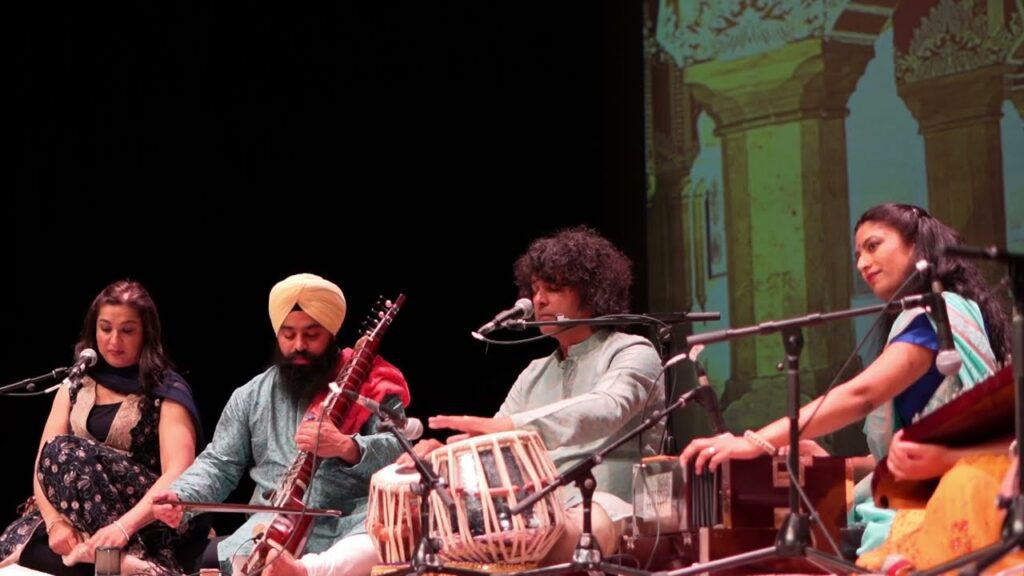
Improvisation, or raag alap, is at the heart of Hindustani classical music. Unlike other music traditions, Hindustani music encourages the performer to express their creativity freely within the framework of a raga. Therefore, developing the skill of improvisation is essential for any Hindustani vocalist.
Building a Strong Foundation in Raga Theory
Before diving into improvisation, it is essential to have a deep understanding of raga theory. Learn about the various ragas, their associated emotions, time of day, and the key notes that define each raga. A solid foundation in raga theory allows you to improvise meaningfully, ensuring that your creative exploration remains true to the raga’s essence.
Start by practicing alap, the unmetered, slow introduction to a raga. The alap serves as the foundation for improvisation, as it allows the vocalist to explore the raga’s notes, ornamentations, and emotional content without the constraints of rhythm. Focus on free-flowing singing, experimenting with different note sequences, and embellishments. As you become more comfortable with the alap, gradually introduce rhythm and tala into your improvisations.
Using Gamak, Meend, and Other Techniques in Improvisation
Improvisation requires a deep understanding of ornamentation techniques, such as meend, gamak, murki, and andolan. These techniques help bring your improvisation to life by adding color, depth, and texture to the notes. Start by improvising within simple ragas, experimenting with different ornamentations to express emotions and evoke the essence of the raga.
Gradually, as your confidence grows, try improvising longer phrases, incorporating rhythmic elements (tala), and increasing the complexity of the ornamentation. Focus on creating fluid transitions between phrases, and pay attention to how your vocal expression aligns with the emotional mood of the raga. With regular practice, you’ll develop the ability to improvise freely and spontaneously, adding an important layer of creativity to your Hindustani vocal practice.
Creating Unique Phrases: Personalizing Your Improvisation
As you progress in your improvisational journey, consider developing your own unique phrases and patterns within a raga. This is where your personal creativity shines through. Improvisation in Hindustani music isn’t just about following predefined rules—it’s about finding your own voice within the tradition.
Experiment with rhythmic variations, dynamic changes, and ornamentations that resonate with your musical personality. While learning from maestros is essential, improvisation offers the freedom to add your unique expression to the raga. Through consistent practice and exploration, you’ll learn how to blend traditional techniques with your personal style, creating an authentic and creative performance.
Benefits of Recording and Self-Review:
-
Identify Technical Issues: Listening to a recording helps you detect technical issues that might not be obvious during live practice, such as inconsistencies in pitch, rhythm, or tone. You can catch small mistakes, such as off-pitch notes or uneven dynamics, and work on them during subsequent practice sessions.
-
Refining Emotional Expression: By listening to how you express emotions through your voice, you can evaluate whether you are effectively conveying the intended mood of the raga. Compare recordings of yourself performing the same raga at different emotional intensities to gauge how well you capture the raga’s essence.
-
Track Progress Over Time: Recording over a long period allows you to track your improvements and see how your vocal quality and skill evolve. It’s a great way to notice the small yet important changes in your singing and celebrate incremental successes.
-
Self-Critique and Reflection: Self-reviewing your recordings with a critical ear helps you reflect on areas that need attention. This practice will help you become a better self-critic and improve your overall performance. While it’s important to listen to your work objectively, also recognize your achievements and growth, boosting your confidence and motivation.
-
Sharing with Teachers: In addition to self-review, you can share your recordings with your teacher for personalized feedback. They may notice aspects that you missed or provide you with valuable suggestions for further improvement.
Goddess Saraswati | The Divine Guide to Hindustani Vocal Performance
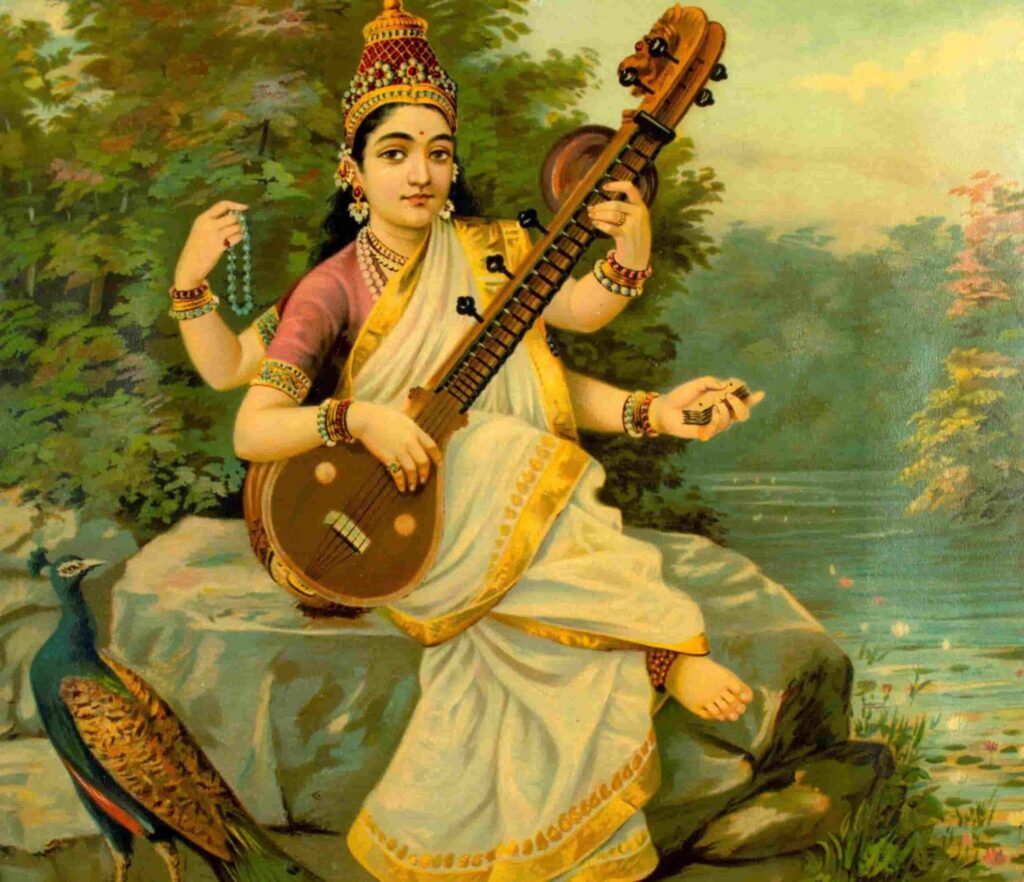
As you bring your carefully honed Hindustani vocal skills to the stage, it is essential to remember the spiritual essence that underpins Indian music. Goddess Saraswati, revered as the mother of Indian music, embodies the purity, wisdom, and discipline that transform a performance from a display of technical skill into a deeply moving spiritual experience. Her influence reminds performers that music is not just an art form but also a means to connect with the divine and inspire the audience.
Saraswati’s Blessings for a Harmonious Performance
Saraswati’s presence in Indian music is a guiding force for every performer. Her divine blessings are invoked to ensure clarity of swaras, precision in taals, and emotional resonance in every raga. For Hindustani vocalists, Saraswati symbolizes the balance between technical mastery and soulful expression, ensuring that every performance leaves a lasting impact on the audience.
The Veena as a Symbol of Perfect Melody
In her iconic imagery, Saraswati is always depicted playing the veena, an instrument synonymous with harmony and melody. Just as Saraswati brings perfection to the strings of the veena, Hindustani vocalists seek to channel her divine energy to align their voices with the intricate patterns of ragas. The veena serves as a reminder that precision and harmony are essential to captivating an audience.
Inspiring Devotion and Connection Through Music
Saraswati’s role extends beyond technical excellence; she is the muse who inspires vocalists to infuse their performances with devotion and authenticity. Her influence helps singers connect deeply with the audience, creating a shared spiritual experience that transcends the boundaries of the stage.
Cultural and Spiritual Context in Stage Performances
Many Hindustani vocalists display an image of Saraswati on stage or begin their performances with a prayer to her. This act not only pays homage to the divine mother of music but also aligns the performer’s energy with the sacred vibrations of Nada (sound). It reinforces the idea that music is not just for entertainment but also for spiritual elevation.
Saraswati’s Timeless Role in Musical Legacy
As you step onto the stage, Saraswati’s blessings remind you of the responsibility that comes with performing. It is not merely about showcasing your effective Hindustani vocal practice but also about honoring the rich cultural and spiritual heritage of Indian classical music.
By invoking Goddess Saraswati during performances, vocalists embody the higher purpose of music—to inspire, heal, and uplift the spirit of every listener. Her presence transforms every stage into a temple of sound, where performers and audiences alike experience the divine connection that only music can offer.
The Role of Riyaaz | Effective Hindustani Vocal Practice for Consistency and Growth

Riyaaz, or consistent practice, is the cornerstone of any effective Hindustani vocal practice. Without regular and focused riyaaz, vocal improvement can stagnate. It’s not just about the amount of time spent singing but about how effectively you structure each practice session. Through daily practice, you not only sharpen your technical skills but also deepen your emotional connection to the music.
Setting a Structured Riyaaz Routine
One of the most crucial elements of effective Hindustani vocal practice is maintaining a structured routine. To begin, set aside specific times each day for practice, and ensure that you are focused solely on your vocal development. A routine provides both consistency and discipline, which are essential for progress. For example, divide your practice into segments: warm-up, vocal exercises, raga practice, and improvisation.
The warm-up should focus on loosening your vocal cords and preparing your voice for extended use. Follow this with technical exercises like sargam (scale exercises) and swara practice. These exercises help strengthen your voice, improve pitch accuracy, and enhance your range. After the technical practice, spend time on raga elaboration, where you can apply your skills to real compositions. End your session with some improvisation, allowing you to experiment with your voice and creativity.
Quality Over Quantity
While practicing for long hours may seem productive, quality is far more important than quantity in Hindustani vocal practice. It’s essential to focus on the accuracy of notes, tone quality, and emotional depth rather than simply ticking off the hours of practice. Slow, mindful practice, especially when learning difficult pieces or ornamentations, ensures that each note is carefully mastered.
Moreover, regular breaks during practice can help maintain vocal health. Over-practicing without rest may lead to strain and fatigue, undermining long-term vocal progress. Therefore, it’s vital to listen to your body and mind. Taking breaks, staying hydrated, and ensuring proper posture will enhance your vocal stamina and prevent burnout.
The Power of Listening and Mimicking | Enhancing Effective Hindustani Vocal Practice
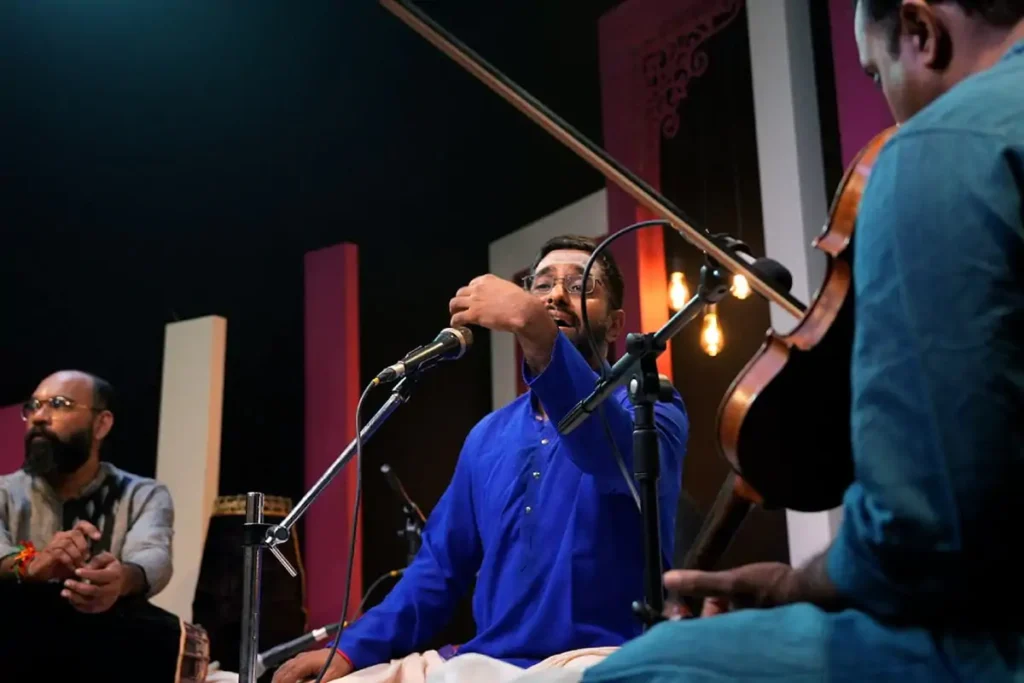
Listening is an often overlooked, yet vital part of Hindustani vocal practice. By listening carefully to recordings of great maestros and attending live performances, you can absorb nuances of voice culture, ornamentations, and improvisation that are essential to your own development. Listening helps internalize the melodic patterns and emotional expressions that define a raga, allowing you to replicate these nuances in your practice.
Learning from Masters
One of the most valuable aspects of learning Hindustani classical music is drawing inspiration from seasoned masters. By listening to recordings of renowned vocalists, you can observe their vocal techniques, breathing patterns, ornamentations, and emotional delivery. This allows you to understand the finer nuances of ragas and helps develop your own unique vocal style. Try to mimic specific phrases or passages you admire, paying close attention to details like vibrato, phrasing, and dynamic shifts.
Through this process, you’ll gain insight into how these musicians make the raga their own. It’s essential to not just focus on the melody but to appreciate the emotional depth behind each phrase. This deep listening process will inform your own improvisation and interpretation, enriching your Hindustani vocal practice.
Mimicry for Vocal Development
Mimicking the techniques of maestros helps develop your ear and refine your tonal quality. Begin by listening to short phrases and then try to replicate them exactly as you hear them. Gradually, try to replicate the ornaments and subtle nuances that make the performance distinctive. This type of focused listening will help you incorporate sophisticated ornamentations and dynamic variations into your practice.
However, it’s important to ensure that mimicry does not simply become parroting. Aim to make the technique your own over time. Use your creativity and add personal embellishments to these techniques, ultimately shaping your unique style while still respecting the traditions of Hindustani classical music.
Vocal Health | Maintaining a Strong and Enduring Voice for Effective Hindustani Vocal Practice

Maintaining vocal health is crucial for any vocalist, particularly for those practicing the demanding art of Hindustani classical music. Long practice sessions and complex techniques can put a strain on the vocal cords if not managed properly. Therefore, vocal health should be a top priority throughout your Hindustani vocal practice.
Vocal Warm-ups and Cool-downs
Just as athletes stretch before and after their training sessions, vocalists must also warm up and cool down their voices. Starting your practice with gentle vocal warm-ups, such as humming, lip trills, and sirens, helps prepare your vocal cords for the strain of singing. These exercises help loosen up the vocal folds, improve breath control, and prevent injury.
After practice, it’s also essential to cool down your voice to relax the muscles and reduce strain. Light humming or singing lower pitches helps the vocal cords return to their natural state after intense practice. This will prevent vocal fatigue and ensure you can continue practicing over the long term.
Hydration and Rest for Optimal Vocal Health
Hydration is another key element in maintaining vocal health. The vocal cords are delicate, and dehydration can cause them to become dry, which can lead to hoarseness or strain. Drinking plenty of water, as well as avoiding excessive caffeine or alcohol, ensures that your vocal cords remain hydrated and flexible.
Moreover, adequate rest is just as important for vocal health. Taking breaks during practice sessions is essential for reducing strain, but vocal rest between practice days is also crucial. Allowing your vocal cords time to recover ensures they remain in top condition for sustained practice and performance.
Posture and Alignment for Healthy Singing
Proper posture is fundamental to maintaining vocal health. When you sing, ensure that your body is aligned with a straight spine and your chest is open. Poor posture can restrict airflow, leading to tension in the throat and improper voice production. Practicing with correct posture ensures that air flows freely through the lungs and vocal cords, allowing you to produce sound effortlessly and without strain.
Feedback and Continuous Improvement | Enhancing Your Effective Hindustani Vocal Practice
One of the best ways to ensure consistent improvement in your Hindustani vocal practice is by seeking feedback. Whether it comes from a teacher, peer, or through self-recording, feedback helps identify areas of improvement and fosters growth.
Feedback from a Teacher or Guru
A skilled teacher or guru can offer invaluable insights into your vocal technique, phrasing, and emotional delivery. Regular lessons provide the opportunity for you to refine your practice, correct mistakes, and develop your skills under professional guidance. A good teacher not only provides constructive criticism but also motivates you to push beyond your limits.
Self-Reflection and Recordings
In addition to external feedback, self-reflection plays a vital role in improving your practice. Recording your sessions allows you to evaluate your progress over time, helping you identify areas for improvement. Listening to your recordings with a critical ear can highlight issues such as pitch inaccuracies, breath control problems, or lack of emotional expression. By comparing old and new recordings, you can track your progress and continue improving.
Continuous Learning and Experimentation
Remember that improvement in Hindustani vocal practice is a lifelong journey. Even when you reach a certain level of proficiency, there’s always room for further learning and exploration. Experiment with new ragas, techniques, or improvisational forms, and continue to refine your skills over time. Embrace challenges and treat them as opportunities to grow, as consistent experimentation leads to creative breakthroughs in vocal artistry.
Conclusion | Your Path to Mastery through Effective Hindustani Vocal Practice
Effective Hindustani vocal practice is a holistic approach that combines technique, emotional expression, dedication, and self-reflection. By following a structured practice routine, incorporating breath control and ornamentation, and continuously learning from great masters, you can gradually unlock your full vocal potential. Regular practice, vocal health maintenance, and seeking feedback ensure steady progress, while creativity and improvisation will help you carve your own path in the rich tradition of Hindustani classical music.
Through mindful and disciplined practice, you will not only improve technically but also connect deeply with the essence of Hindustani ragas, bringing them to life with your unique voice. Always remember, the journey of a Hindustani vocalist is a lifelong process of discovery, growth, and personal expression. Keep practicing, keep learning, and most importantly, enjoy every moment of this beautiful musical tradition.
The Mystic Keys offers online Effective Singing classes, designed to fit your schedule and goals. Learn from expert instructors and join a global community of passionate musicians.
📢 Explore More at The Mystic Keys Homepage
For more music content and exciting offers follow us on Facebook, Instagram, YouTube, LinkedIn, Twitter, Pinterest, Reddit, Threads, and Quora.


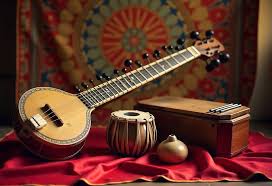

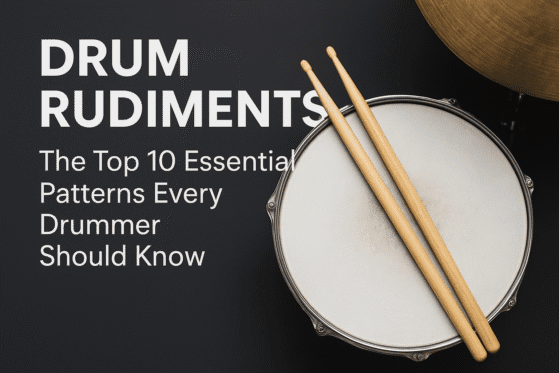
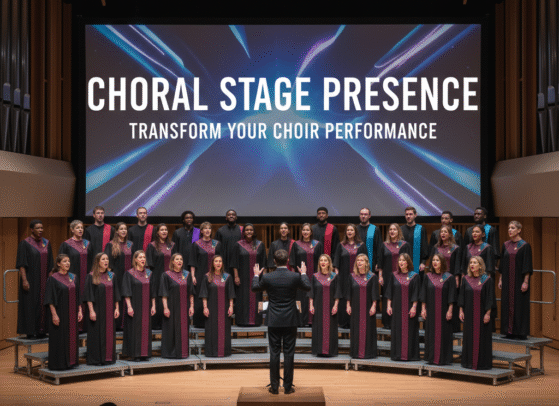



One thought on “Effective Hindustani Vocal Practice”
I am facing challenges in Taals. So give some more information in achieving accuracy in taal during singing eg from where to start. Before beat after beat etc.